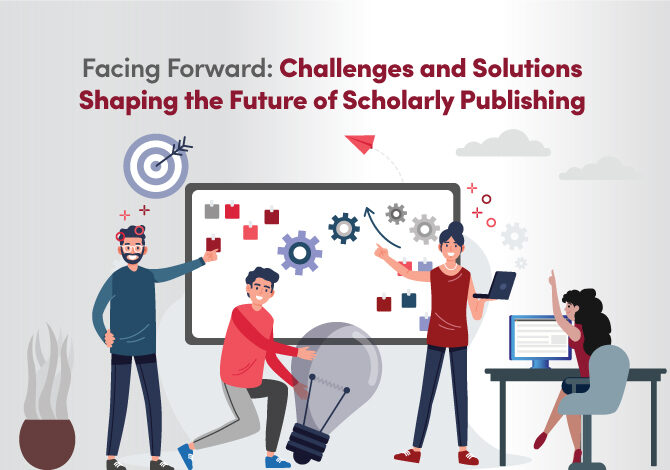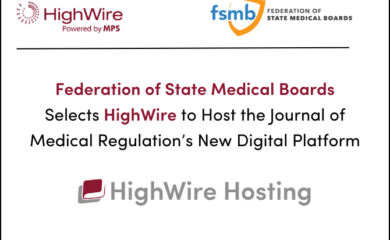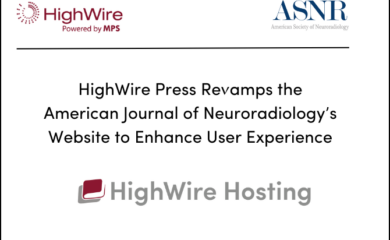As we reach the midpoint of the decade—and a quarter of the way into the 21st century—scholarly publishing stands at a crossroads. The infrastructure that has supported scientific communication for decades is being tested by new technologies, regulatory shifts, and growing calls for transparency, equity, and accountability.
In this period of rapid transition, the biggest questions aren’t just about open access or AI adoption. They’re about how we fundamentally define the purpose of publishing—and whether our systems are equipped to serve researchers, readers, and the public in the years to come.
From Articles to Ecosystems: Redefining Scientific Outputs
One of the most significant challenges ahead is whether the traditional article can continue to serve as the primary currency of scientific communication. Despite technological advances, the article remains a polished, often sanitized, summary of years of work. Datasets, methods, null results, and peer review histories are often left behind.
Future-facing proposals suggest a modular, transparent, and cumulative publishing model:
- Articles enriched with XML-based metadata and linked to underlying datasets.
- DOIs assigned to discrete components: protocols, code, commentary, peer reviews.
- Dynamic records that evolve as evidence and interpretations grow.
This model reflects science as a progressive and collaborative endeavor, rather than a series of static, finished outputs.
“We’ve rewarded certainty—but certainty is the antithesis of science. What we need is a system that rewards transparency, integrity, and iterative learning.”
The Open Access Tipping Point
Public access mandates—like the U.S. OSTP’s Nelson Memo—have accelerated the need to make federally funded research freely available upon publication. This represents a massive shift from legacy subscription models and has left many journals wrestling with questions about business models, sustainability, and infrastructure.
Challenges:
- Many publishers are still subscription-based and face financial uncertainty as accepted manuscripts are deposited in repositories, potentially reducing subscription value.
- There is no clear consensus on what counts as a “reasonable publication cost,” creating hesitancy among society publishers and academic presses.
- Smaller or niche journals, particularly those in the humanities, often lack the scale to transition to Gold or Diamond OA models.
Solutions Emerging:
- MIT Press has diversified its models, operating 14 Diamond OA journals (free to both authors and readers), and 4 Gold OA titles (funded by APCs), while allowing repository archiving to meet compliance needs.
- Frontiers and others are expanding their infrastructure to support open data, open peer review, and code sharing—creating a broader Open Science ecosystem.
- New models like Subscribe to Open and Green OA + Institutional Support are being explored to balance financial viability with compliance and openness.
Global Policy Fragmentation—and Innovation
The regulatory landscape is diverging globally, creating both risks and opportunities:
- Europe is moving toward non-APC models, emphasizing equitable access and challenging metric-based evaluation through initiatives like CoARA.
- The EU AI Act introduces strict categories of risk for AI tools, including those used in peer review. This could limit innovation but also enforce transparency and user protections.
- China aims to become a global leader in academic publishing, encouraging domestic researchers to publish in Chinese journals and applying stricter evaluations to foreign publishers. By 2035, its goal is to lead in emerging interdisciplinary fields.
What does this mean for publishers? Collaboration with governments, institutions, and funders will be essential. As more publishing decisions become politicized or subject to compliance regimes, trust, agility, and ethical foresight will matter more than ever.
Rethinking Peer Review and Research Integrity
Research integrity is under strain. From paper mills and purchased authorship to systemic manipulation of peer review, the scale and sophistication of misconduct are growing. At the same time, the pressure to publish—especially in high-impact journals—has distorted incentives.
Future Directions:
- Shift emphasis from quantity to quality. Move beyond counting publications toward evaluating how research impacts real-world problems.
- Explore registered reports: peer review of methods before data collection to reduce bias and increase transparency.
- Build systems that track and display the full provenance of a study—including datasets, peer review steps, revisions, and even contradictory findings.
- Promote replications and reinterpretations as valid and valuable contributions.
One idea is for peer review to be unbundled—with discrete expert reviews of methodology, data, statistical interpretation, and ethical dimensions. This creates a more transparent and robust system that aligns with science’s iterative nature.
Technology, Trust, and the AI Challenge
Artificial Intelligence is poised to become a foundational layer in publishing—affecting everything from manuscript screening and plagiarism detection to peer review and content generation. But its adoption brings ethical and technical uncertainties.
Key Concerns:
- Bias in training data and lack of transparency in outputs.
- Over-reliance on AI for decision-making without adequate human oversight.
- Commercialization risks: will AI systems trained on open science be used to extract profit from public knowledge?
Emerging Solutions:
- Encourage AI-assisted tools that help validate data and streamline workflows, but keep human editorial judgment at the center.
- Design policies that assign accountability—the AI cannot be blamed for errors or misconduct.
- Embed AI tools into modular publishing systems, where their roles are clear, auditable, and non-substitutive of critical thinking.
Ethics in the Age of Acceleration
Perhaps the greatest challenge ahead is not technical, but moral. As publication speed increases and systems become more complex, ethical reflection must remain central.
- What happens to marginalized voices if DEIA efforts are deprioritized?
- What happens to the scientific record if governments demand pre-approval of reviewers or retract research based on political criteria?
- What happens to trust when speed and volume are rewarded over care and clarity?
A future-facing publishing model must integrate essays on failure, blind alleys, and ethical debates into the scientific narrative—not as afterthoughts, but as first-class outputs. In short, we must move beyond the article to embrace the human process of science.
Conclusion: A Call to Redesign, Not Just Reform
The future of scholarly publishing won’t be decided by a single policy, platform, or AI tool. It will be built—slowly, collaboratively—by those willing to question assumptions, reengineer incentives, and imagine systems that match the values science is meant to uphold.
To meet the challenges ahead, the community must:
- Shift from certainty to conversation
- Prioritize replicability and transparency
- Expand what counts as scientific contribution
- Reinforce the ethics and equity of publishing infrastructure
In the face of disruption, we have the opportunity not just to adapt, but to lead. Because the future of publishing isn’t just about delivering research—it’s about building the frameworks that allow truth, diversity, and discovery to flourish.
– By Tony Alves



